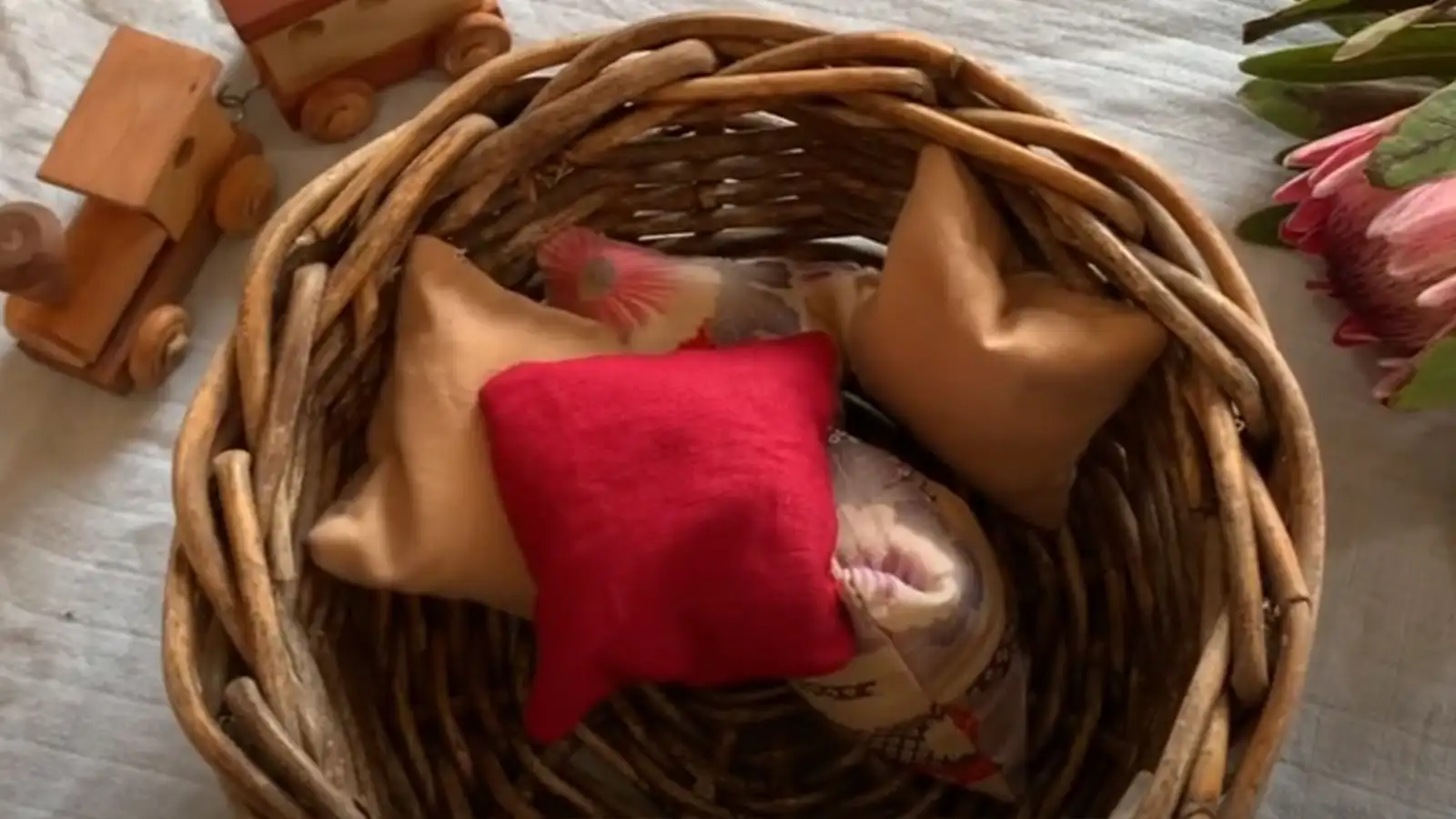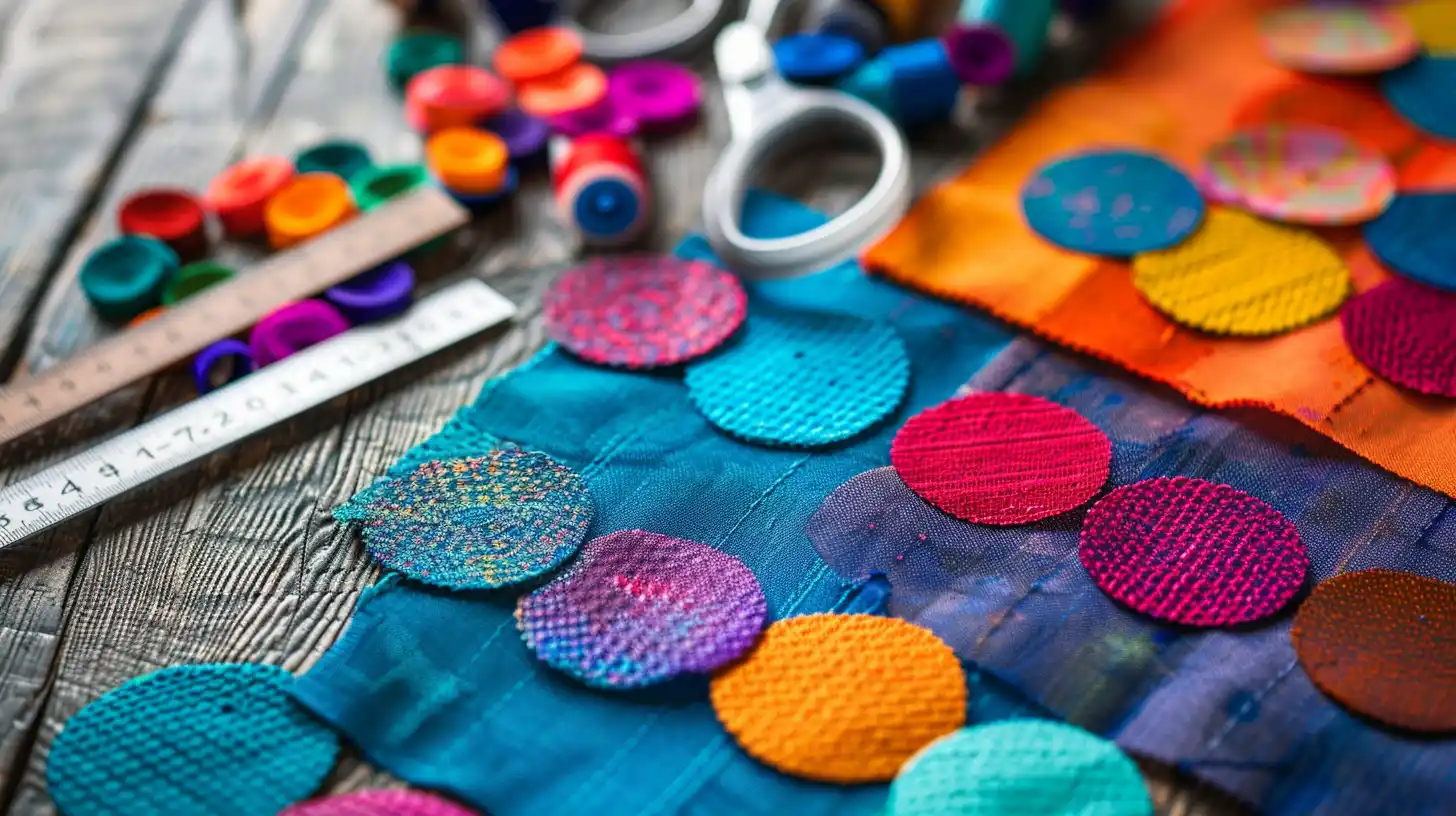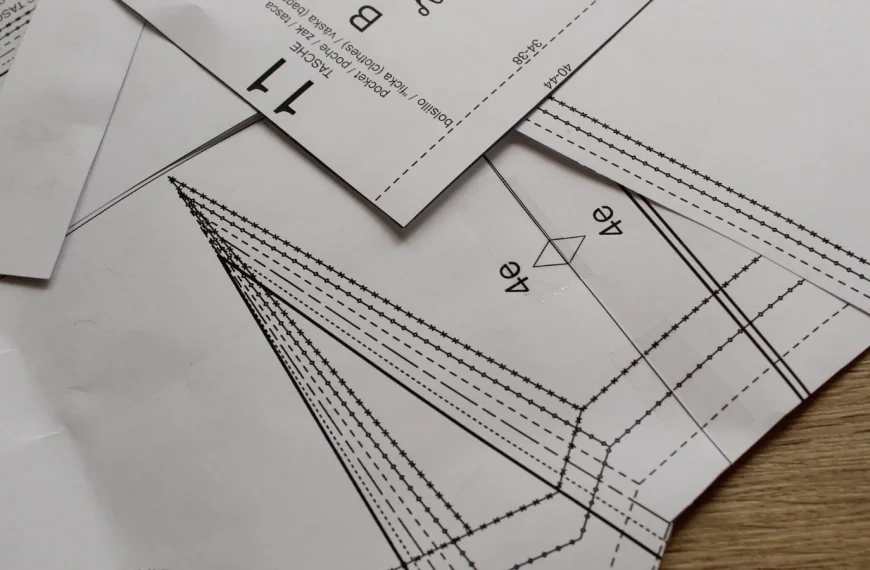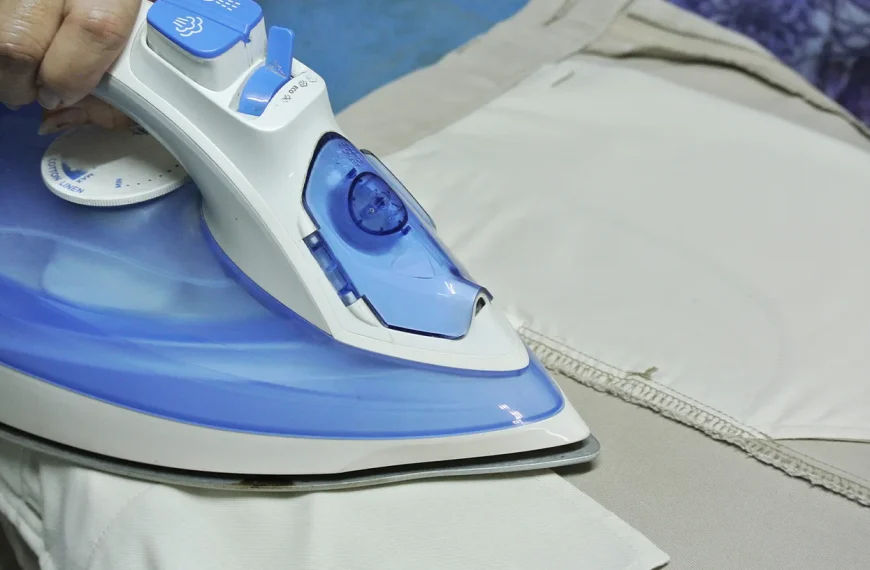For centuries, people have practiced sewing, a timeless craft that carries its own unique language. From applique to zipper foot, understanding the terms used in sewing is essential for any seamstress or tailor. Whether you’re a beginner looking to build your sewing vocabulary or a seasoned pro wanting to brush up on your skills, this article will cover the most common sewing terms and provide a comprehensive guide to help you navigate the world of fabric, threads, and needles.
What are the Terms for Sewing?
You’ll encounter unique terms like applique and armscye that are essential for bringing your sewing projects to life. Understanding the use of ballpoint needles, how to baste, and the role of beeswax can significantly improve your sewing technique.
These terms are the building blocks for mastering the art of sewing, guiding you through each step with precision.
A-Z: Glossary of Sewing Terms
A
Applique: Applique is a creative technique in which you layer one fabric onto another to craft intricate designs or patterns. It’s ideal for quilting, embellishing garments, and decorating home decor.
Armscye: It’s the opening in a bodice where you attach the sleeve during garment construction.
B
Ballpoint needles: Specially designed to glide smoothly between threads without causing damage. Their rounded tip is perfect for working with stretchy fabrics without snagging or creating holes.
Baste: Basting is a crucial sewing technique that uses temporary stitches to hold fabric layers together, ensuring they don’t shift before final sewing. Basting stitches are longer and easier to remove than regular ones.
Beeswax: Beeswax can strengthen and lubricate your thread, making it simpler to maneuver through fabrics without tangling. You’ll find it indispensable, especially in hand sewing and tackling leather projects.
Bias: Bias refers to cutting fabric at a 45-degree angle to the warp and weft threads, allowing for greater project stretch and flexibility. Additionally, bias tape is essential for neatly finishing edges, adding decorative touches, or creating piping.
Binding: Binding is a narrow strip of fabric sewn around the edges. This technique encases raw edges, ensuring a clean, professional finish.
Blanket stitch: It’s perfect to use this hand stitch to finish fabric edges. It offers a decorative looped appearance that’s both functional and eye-catching. Applique work commonly uses it to secure fabric with a neat edge.
Bobbin: A bobbin is a foundational element that holds the bottom thread in your sewing machine. The bobbin works alongside the top thread to form stitches on the fabric.
Bumble bunching: Have you ever noticed tangled loops on the underside of your sewing project? Incorrect tension settings often cause bumble bunching, a common issue. It’s visible on the bobbin side and can make your work look messy.
Buttonhole: A buttonhole is a small slit in fabric, reinforced with stitching, designed to secure a button.
C
Casing: Folding and stitching an edge creates a fabric tunnel that holds elastic or drawstring. Garment waistbands, cuffs, and hems commonly use it.
Cord: Drawstrings, piping, and decorative elements all use this twisted fiber.
Crochet: Crocheting is a creative and versatile method that uses yarn and a hooked needle to craft fabric with unique designs.
Crossgrain: Crossgrain is the line of fabric that is perpendicular to the selvage edge.
Cross stitch: Cross stitch is a versatile embroidery method that creates intricate designs on fabric using diagonal stitches that form a cross shape.
Cutting mat: A cutting mat ensures precise fabric cuts while safeguarding your work surfaces. Made from self-healing materials, it won’t show wear from your rotary cutter.
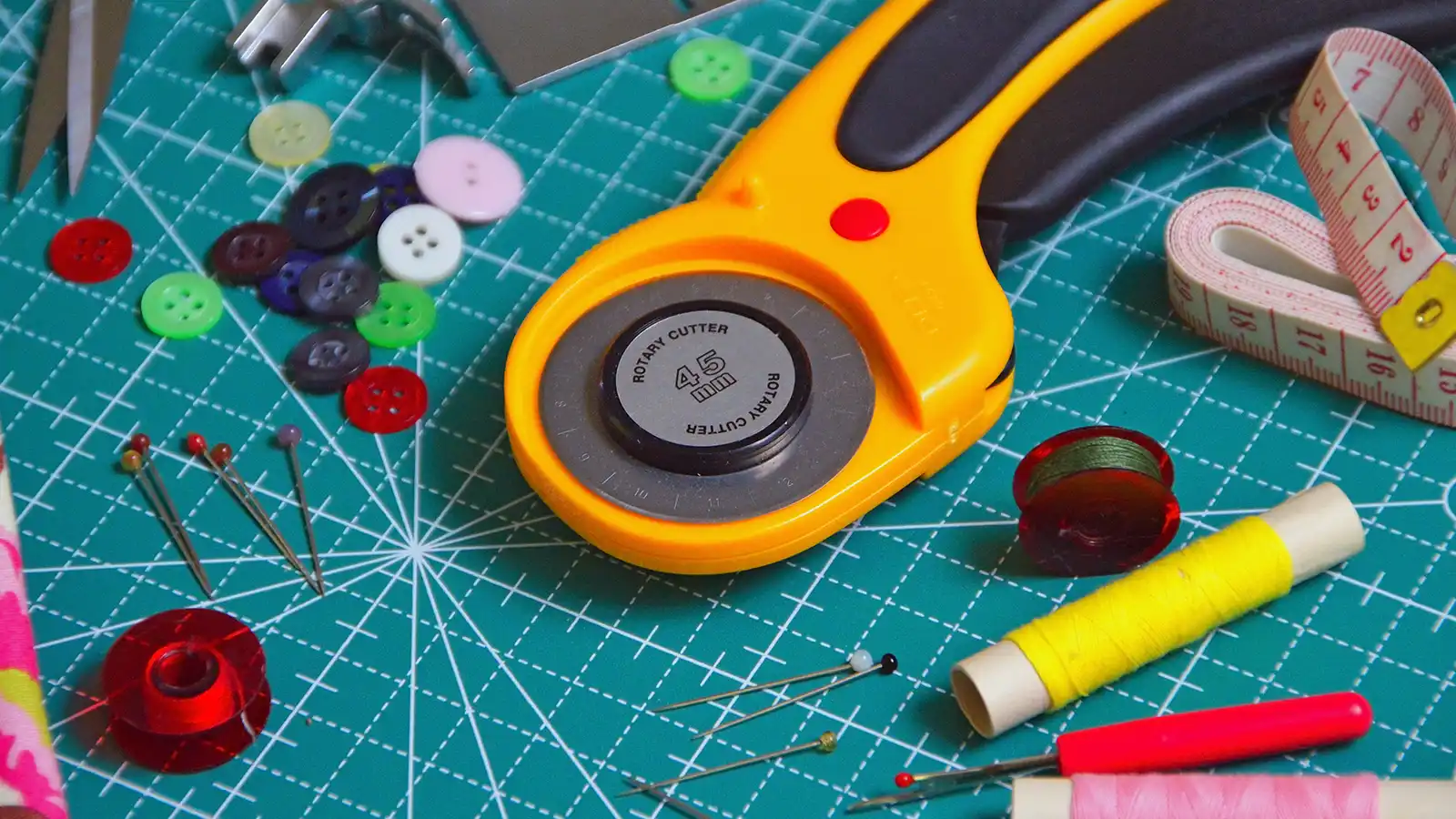
D
Dart: Darts are small, triangular folds sewn into fabric, essential for a tailored fit. Commonly found at the bust, waist, and back, they enhance a garment’s silhouette.
Darning: Darning is a traditional sewing technique that skillfully repairs small holes in the fabric. By weaving stitches across the damaged area, you mend the fabric seamlessly.
Double-needle: This special sewing machine needle allows you to simultaneously create parallel rows of stitches. It’s perfect for achieving professional-looking hems and topstitching.
Drape: The drape determines how a fabric hangs and impacts the final appearance of your garment. Different fabrics offer unique drapes, with heavier ones providing more structure.
Dressmaker: A dressmaker meticulously crafts custom clothing for women.
E
Ease: Ease is the extra space added to a pattern to ensure a comfortable fit without being too tight or restrictive.
Edge stitch: This sewing technique, typically executed with a straight stitch along the fabric edge, is essential to prevent fraying and ensure a professional finish.
Embellishment: A decorative item, such as buttons, beads, jewels, or ornamental stitching, added to enhance the look of a garment or project.
Embroidery: Embroidery transforms plain fabric into a canvas of creativity and personal expression through its detailed needlework.
F
Face: It refers to the front side of the fabric that will be visible in the finished garment. It’s usually the side with the print, design, or texture meant to be seen.
Fat Quarter: A fat quarter is a versatile pre-cut piece of fabric measuring 18 x 22 inches. It’s perfect for patchwork, applique, and other sewing projects that need just a bit of fabric.
Feather stitch: It involves creating small, slanted stitches that mimic feathers, enriching your fabric with texture and visual appeal.
Feed dogs: Small teeth-like mechanisms under your sewing machine’s presser foot to ensure your fabric moves smoothly during stitching. They work alongside the presser foot to maintain consistent fabric feeding.
Finger press: Finger pressing is a method for creating crisp folds in fabric without an iron. It’s perfect for quickly pressing seams or hems, especially when working on the go or with delicate fabrics.
French seam: The French seam securely encases raw edges by sewing two lines of stitching.
Frogging: Frogging refers to the process of removing stitches from fabric.

G
Gather: This sewing method evenly distributes fabric to create fullness, which is perfect for making ruffles, skirts, and sleeves.
Grain: Grain refers to the direction of threads in woven fabric, including the warp (lengthwise) and weft (crosswise). Fabrics cut on the straight grain have less stretch, while bias-cut fabrics offer more flexibility.
H
Hem: A garment’s hem can prevent the fabric from fraying and ensure a clean and polished finish. Depending on your garment’s style, hems can be straight, curved, or rolled, each tailored to the desired finished length.
Hooks and eyes: Hooks and eyes are small yet powerful fasteners that ensure your garments stay securely closed. These discreet closure options are perfect for areas where zippers or buttons falter, like necklines and waistbands.
I
Interfacing: Interfacing is a type of textile that is used on the wrong side of a fabric. It can provide additional support and structure to the fabric. It comes in fusible or sew-in forms and weights from woven to knit.
Interlocking stitch: This stitch, in which the needle thread loops around the bobbin thread, secures fabric layers together. It’s critical for hemming, edging, and decorative work.
Invisible zipper: This type of zipper, hidden within a seam, offers a seamless look, particularly coveted in formal wear.
J
Jelly roll: A jelly roll is a pre-cut bundle of fabric strips that measure 2 1/2″ wide by 44″-45″ long.
K
Knit fabric/knits: Understanding knit fabrics is essential, as their unique structure offers both stretch and comfort in various garments.
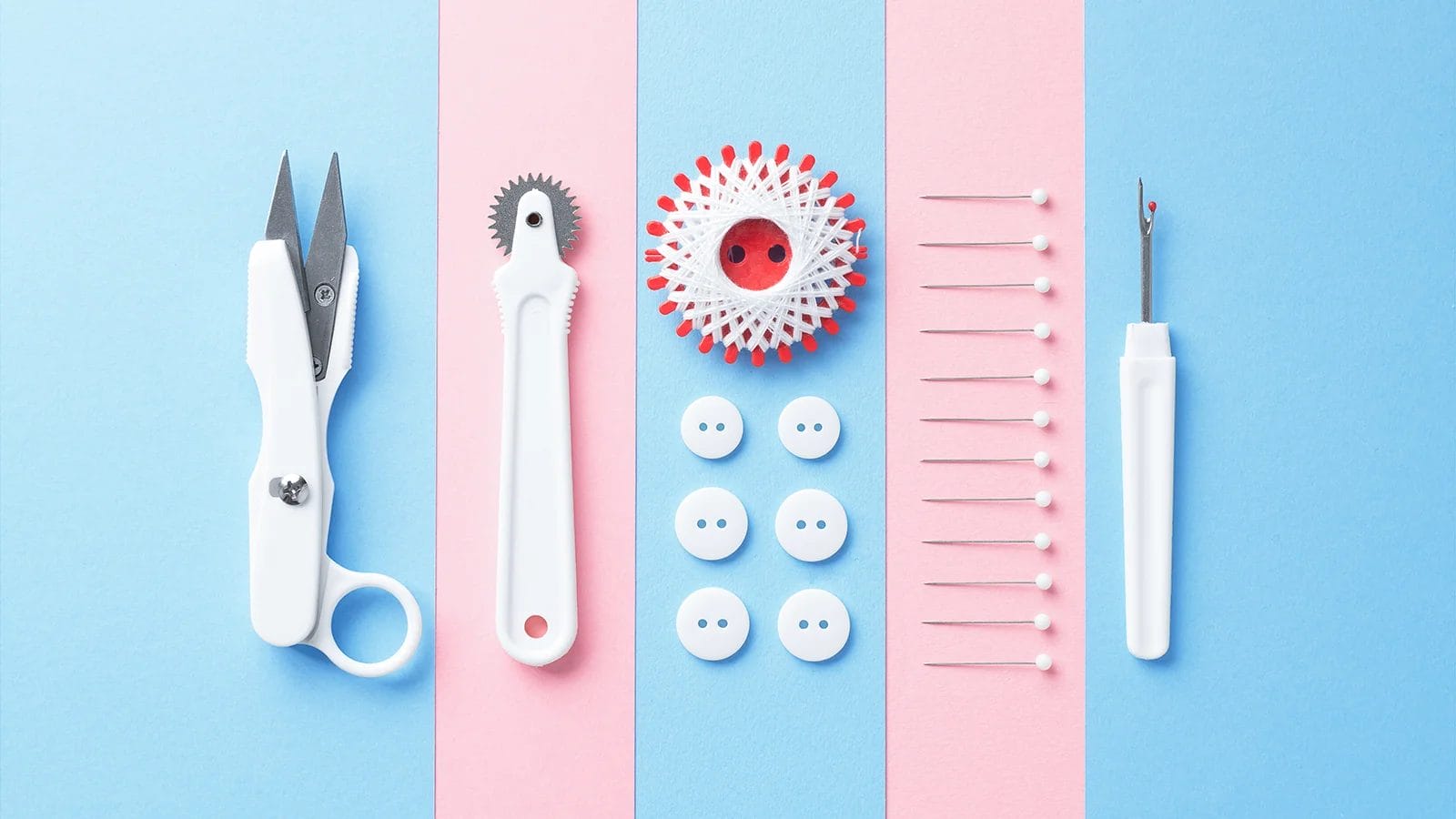
L
Ladder stitch: This hand-sewn stitch, also known as an invisible stitch, is critical for closing openings with a seamless finish. It mimics a ladder’s rungs.
Lapped seams: By overlapping and stitching fabric edges together, lapped seams offer a sturdy and elegant solution for fabrics prone to fraying.
Lining: Made from materials like silk, polyester, or cotton, lining ensures a smooth drape and a professional look. It gives your garments a neat finish and adds structure, opacity, and comfort.
Long stitch: In tapestry and embroidery projects, a long stitch is crucial for covering large areas with fewer movements. It offers both decorative and practical benefits.
M
Mark: Marking is a step that involves transferring pattern details onto fabric for precision in sewing projects. For this, you’ll use tools like tailor’s chalk, fabric markers, or tracing wheels.
Match point: A match point marks a specific spot on a pattern piece crucial for alignment. It can keep the shape and fit of your garment accurate, ensuring seams and designs line up correctly.
Mitered corner: By folding and cutting the fabric at a 45-degree angle, you’ll create a diagonal seam that reduces bulk, resulting in crisp, sharp corners. This technique is ideal for items like napkins and quilts, giving them a polished, professional finish.
Muslin: This plain-weave cotton fabric is lightweight, versatile, and inexpensive, making it ideal for practicing sewing techniques and refining patterns.
N
Nap: The fabric texture, with its directionality, affects the garment’s color and sheen. Sewing patterns often guide you in cutting fabric so the nap runs uniformly, ensuring a professional appearance.
Notch: A notch is a small triangular or V-shaped cut on the edge of a pattern piece. It can be single, double, or triple. It guides you in joining pieces accurately, preventing misalignments in your creations.
Notions: In sewing, notions are the small but essential tools and accessories, such as buttons, zippers, and threads, that you’ll need for garment construction.
O
Overlay: This method involves placing a top layer of fabric over another for decorative or functional reasons.
Overlocker: An overlocker, often called a serger, is vital for achieving neatly finished fabric edges. Essential in garment construction, it streamlines sewing tasks by sewing, trimming, and finishing seams all in one pass.
P
Patchwork: Patchwork is a technique where you sew small fabric pieces together. This sewing technique is integral to quilting and lets you mix and match small pieces of fabric in endless combinations.
Pattern: Patterns serve as the blueprint for your sewing projects. Each pattern envelope includes instructions, fabric recommendations, and essential pattern pieces.
Pinking shears: The unique serrated blades of pinking shears cut fabric edges into a zigzag pattern, effectively sealing them to prevent fraying.
Pintuck: Pintucks create a subtle, elegant decorative effect by folding the fabric and stitching along the fold.
Pleat: Essentially, a pleat is a secured fold of fabric that creates a sharp, precise crease.
Presser foot: A presser foot is a key component of your sewing machine. It holds your fabric in place, ensuring smooth stitching.
Princess seam: This type of seam runs vertically from the shoulder or armhole to the hem. It shapes and contours the body.
Q
Quilting: Quilting involves sewing together small pieces of fabric in batted layers to create a decorative piece of bedding or wall hanging.
R
Raw edge: Raw edges refer to unfinished, cut edges of fabric that can fray if left untreated.
Right side: The right side is usually more vibrant and detailed, designed to be visible.
Running stitch: This basic hand-sewing stitch, ideal for basting, gathering, and mending, runs in and out of the fabric in a straight line.
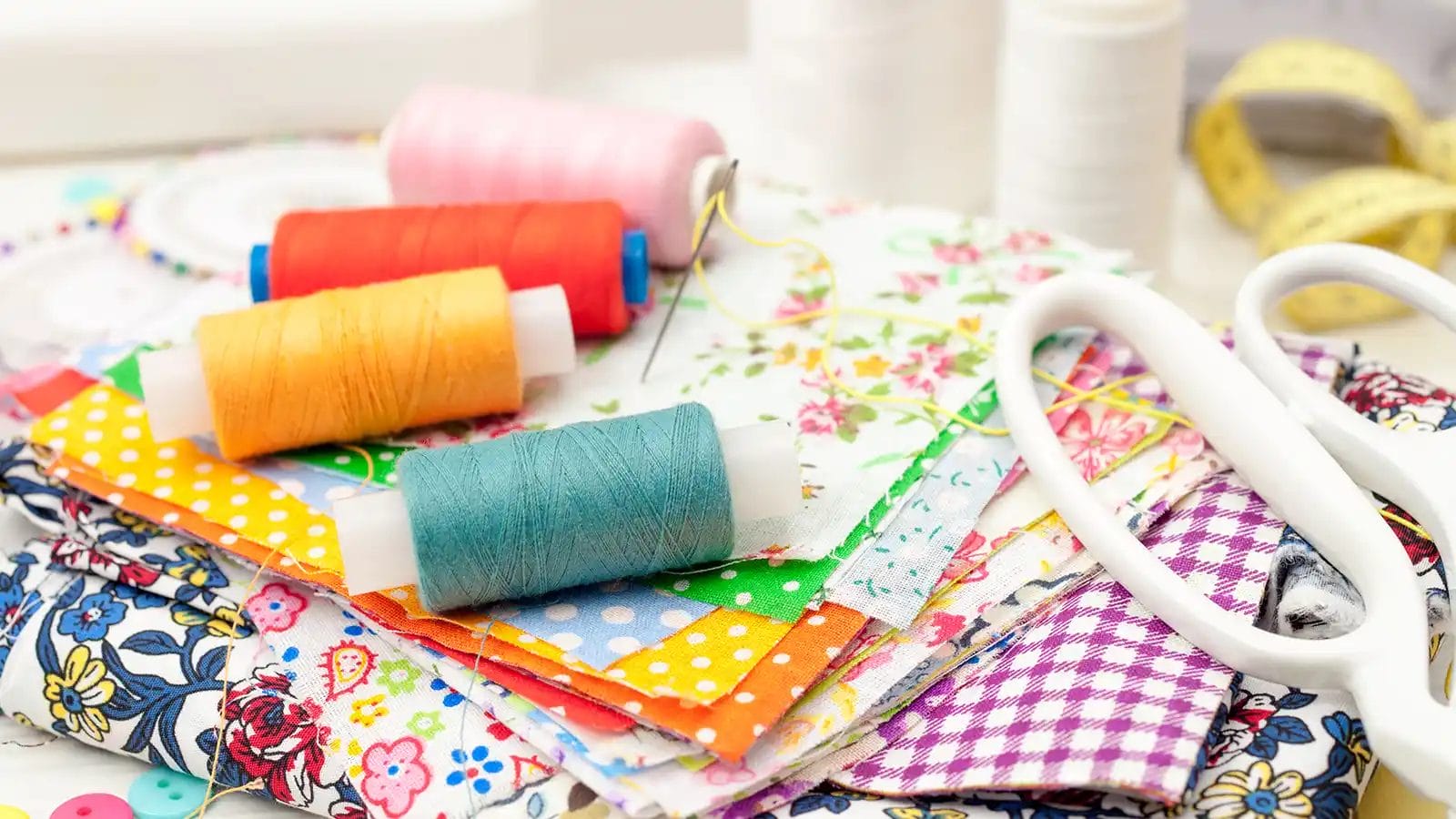
S
Seam: Understanding the concept of a seam is crucial because it joins two pieces of fabric together to form the structure of your sewing project.
Seam allowance: Seam allowance refers to the extra fabric allowance between your sewing line and the cut edge of the fabric.
Seam ripper: A seam ripper is an indispensable tool for quickly and easily removing unwanted stitches from fabric.
Selvedge: The selvedge is the tightly woven edge that runs lengthwise parallel to the warp threads. It is crucial to prevent the material from fraying or unraveling.
Serger: The serger is a machine that expertly prevents fraying with its multiple threads. Also known as an overlock machine, a serger uses 3–4 threads to finish raw edges, creating strong, stretchy, and professional-looking seams.
Staystitch: Staystitching involves sewing a straight line within the seam allowance to stabilize fabric edges. It helps prevent stretching and puckering, keeping your project looking sharp.
Straight stitch: It’s the go-to for joining fabric pieces, providing a clean look and versatility across garment construction, quilting, and hemming.
Stitch length: Stitch length is the distance between each stitch your sewing machine makes. It can significantly alter the final appearance and durability of your work.
Stretch percentage: It’s about how much your fabric can stretch beyond its original length.
T
Tacking: Before adding the final stitches, tacking creates large, visible stitches to hold pieces of fabric together temporarily.
Tailor’s chalk: Tailor’s chalk allows you to mark fabric with precision for cutting and alterations.
Tambour needle: A tambour needle is essential for the intricate art of tambour embroidery. It features a small hook that skillfully catches and pulls the thread through the fabric to create delicate designs.
Termination point: It’s the point where two seam lines meet and come to an end.
Thimble: Wearing a thimble protects your fingers from painful pricks as you push needles through the fabric.
Top stitch: Top stitching is a decorative line on the right side of the fabric. It enhances the appearance and reinforces seams, ensuring your projects look and feel professional.
Tuck: Folding fabric back on itself creates a tuck, which is essentially a crease or fold. People often use them to add texture and interest to garments, creating visual appeal in cuffs, collars, or bodices.
U
Underlay: An underlay is a crucial layer of fabric that improves the structure and durability of the main material.
Understitch: This sewing technique secures the seam allowance to the facing. It is close to the seam line and ensures a neat finish. It prevents facings and linings from shifting or peeking out, especially around necklines and hems.
V
Vertical bobbin: A vertical bobbin, loaded vertically for use, is key for certain industrial and high-end domestic models.
W
Wadding: Wadding, a crucial element in quilting and padding projects, offers the warmth and insulation your creations need.
Walking foot: With its own feed dogs, this sewing machine attachment works alongside your machine to move fabric layers together smoothly.
Warp: Warp threads run lengthwise, providing essential stability and strength. In woven fabric, these warp threads are key to its resistance to stretching.
Weft: In woven fabrics, the weft runs horizontally across the fabric and intersects perpendicularly with the warp threads to form the material’s structure.
Wrong side: It’s typically the back or underside, where seams and finishes remain hidden in the final garment.
Y
Yarn: Yarn is a long, continuous length of interlocked fibers vital for knitting, weaving, and crocheting. It’s crafted from various materials, such as wool, cotton, and silk.
Yardage: Yardage is the amount of fabric you’ll need for your sewing projects.
Yoke: A yoke is a shaped piece of fabric, often found at the shoulders or waist of a garment.

Z
Zigzag stitch: A zigzag stitch is essential for decorative and practical purposes. It quickly enhances the durability and flexibility of your sewing projects.
Zipper foot: A zipper foot serves as a specialized presser foot, specifically designed to attach zippers to your sewing projects successfully. This sewing machine presser foot has a narrow, grooved sole, ensuring your needle stitches close to the zipper teeth without snagging.
Conclusion
So, you’ve dipped your toes into the vast sea of sewing terms and essential tools for your crafting journey. By now, you’re getting comfortable with the lingo, from the right side to the selvage and everything in between.
Remember, each term you’ve learned is a step closer to turning your projects from homemade to handmade with a professional touch. Keep practicing, and soon, threading your machine, choosing fabrics, and deciphering patterns will feel like second nature.
You’re well on your way to sewing mastery.
Learn more sewing tips on Longan Craft Blog! Dive into the fabric world with Longancraft!


